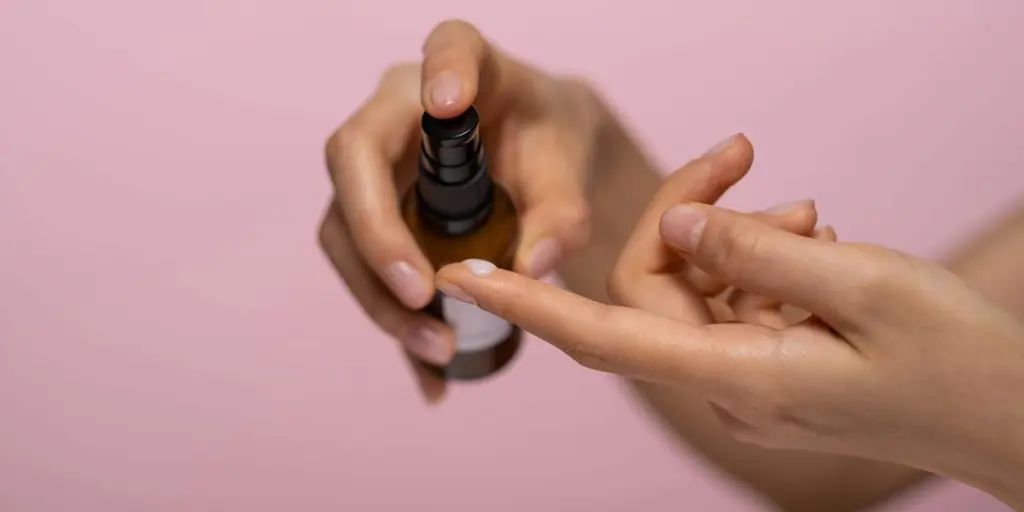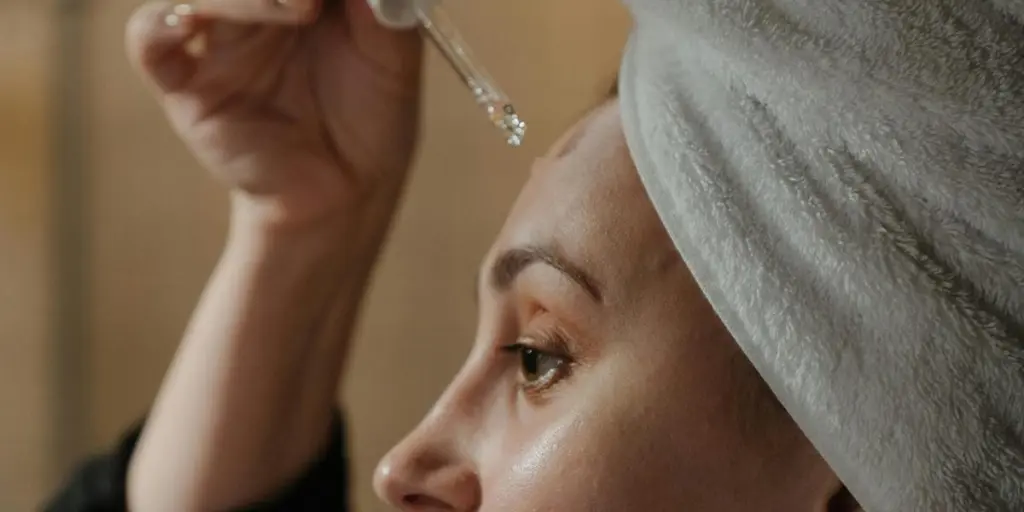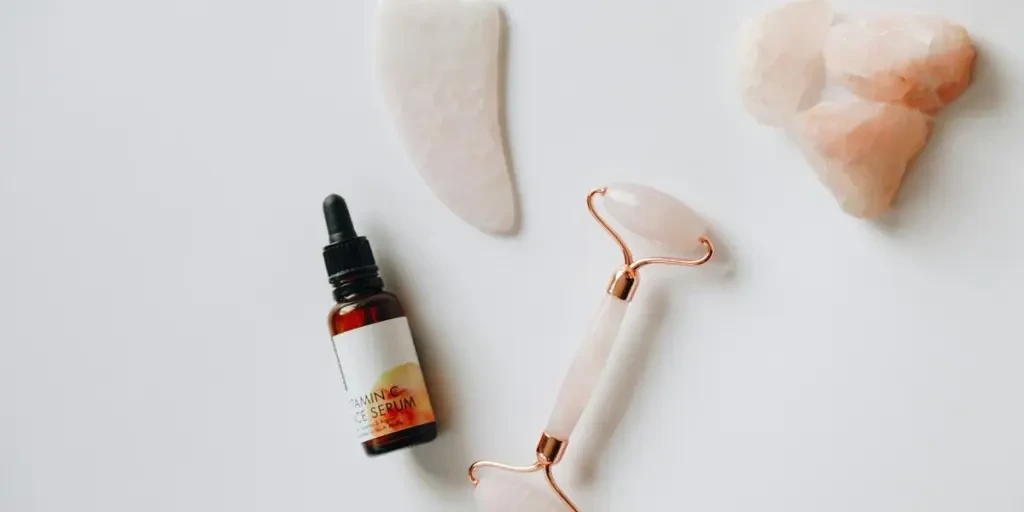In the ever-evolving world of skincare, sunscreen serum has emerged as a standout product, capturing the attention of beauty enthusiasts and industry experts alike. As we step into 2025, the demand for multifunctional skincare solutions continues to soar, and sunscreen serum is at the forefront of this trend. This innovative product not only offers sun protection but also integrates seamlessly into daily skincare routines, making it a must-have for consumers seeking both convenience and efficacy.
Table of Contents:
– Understanding Sunscreen Serum and Its Market Potential
– Exploring Popular Types of Sunscreen Serums
– Addressing Common Consumer Pain Points
– Innovations and New Products in the Market
– Final Thoughts: Navigating the Sunscreen Serum Market
Understanding Sunscreen Serum and Its Market Potential

What is Sunscreen Serum and Why It’s Gaining Popularity
Sunscreen serum is a lightweight, fast-absorbing formulation that combines the protective benefits of traditional sunscreen with the nourishing properties of a serum. Unlike conventional sunscreens, which can often feel heavy and greasy, sunscreen serums are designed to be easily layered under makeup or other skincare products, providing a more pleasant user experience. This dual functionality has made sunscreen serums particularly appealing to consumers who prioritize both skin health and aesthetic appeal.
The global sunscreen market is projected to grow at a compound annual growth rate (CAGR) of 5.28%, reaching $16.204 billion by 2029, up from $11.372 billion in 2022. This growth is driven by increasing consumer awareness about the harmful effects of UV radiation, such as skin cancer and premature aging. The rise in outdoor activities and the growing emphasis on personal care further fuel the demand for effective sun protection solutions. Sunscreen serums, with their enhanced usability and added skincare benefits, are well-positioned to capture a significant share of this expanding market.
Trending Hashtags and Social Media Buzz
In the digital age, social media plays a crucial role in shaping consumer preferences and driving product trends. Sunscreen serums have garnered substantial attention on platforms like Instagram, TikTok, and Twitter, where influencers and skincare experts frequently share their positive experiences and recommendations. Hashtags such as #SunscreenSerum, #SkincareRoutine, and #SunProtection have seen a surge in usage, reflecting the growing interest in this product category.
The buzz around sunscreen serums is not just limited to individual users; major beauty brands are also leveraging social media to launch and promote their latest offerings. For instance, innovative campaigns and collaborations with popular influencers have helped brands reach a wider audience and build credibility. This social media momentum is expected to continue driving the popularity of sunscreen serums, making them a staple in skincare routines worldwide.
Aligning with Broader Skincare Trends
The rise of sunscreen serums is closely aligned with several broader trends in the skincare industry. One of the most significant trends is the shift towards multifunctional products that offer multiple benefits in a single application. Consumers are increasingly looking for products that simplify their routines without compromising on efficacy. Sunscreen serums, which provide both sun protection and skincare benefits, perfectly fit this demand.
Another key trend is the growing preference for clean and natural beauty products. As consumers become more conscious of the ingredients in their skincare products, there is a rising demand for formulations that are free from harmful chemicals and environmentally friendly. Sunscreen serums that incorporate natural UV filters and plant-based ingredients are particularly appealing to this segment of consumers.
Additionally, the aging population and the increasing prevalence of skin conditions such as melanoma are driving the need for effective sun protection solutions. According to the American Academy of Dermatology, melanoma is a leading cause of skin cancer deaths, with an estimated 7,650 deaths in 2022 alone. This alarming statistic underscores the importance of using high-quality sun protection products, further boosting the demand for sunscreen serums.
In conclusion, sunscreen serums are poised to become a key player in the skincare market in 2025. Their unique combination of sun protection and skincare benefits, coupled with the support of social media and alignment with broader industry trends, positions them as a highly desirable product for consumers. As the market continues to grow, business buyers, including retailers and wholesalers, should consider incorporating sunscreen serums into their product offerings to meet the evolving needs of their customers.
Exploring Popular Types of Sunscreen Serums

Mineral vs. Chemical: Pros and Cons
When it comes to sunscreen serums, the debate between mineral and chemical formulations is ongoing. Mineral sunscreens, often referred to as physical sunscreens, contain active mineral ingredients such as zinc oxide or titanium dioxide. These ingredients work by sitting on top of the skin and physically blocking UV rays. According to a report by the American Academy of Dermatology, mineral sunscreens are less likely to cause skin irritation, making them ideal for sensitive skin. They also start working immediately upon application, which is a significant advantage for those needing instant protection.
On the other hand, chemical sunscreens contain organic compounds like oxybenzone, avobenzone, and octinoxate. These compounds absorb UV radiation and convert it into heat, which is then released from the skin. Chemical sunscreens tend to be more lightweight and easier to apply without leaving a white cast, a common issue with mineral sunscreens. However, they require about 20 minutes to become effective after application. The choice between mineral and chemical sunscreens often depends on the specific needs of the end consumer, such as skin type and desired texture.
Key Ingredients and Their Benefits
The effectiveness of sunscreen serums largely depends on their ingredients. For instance, the inclusion of antioxidants like Vitamin C and E can enhance the protective benefits of sunscreens. These antioxidants help neutralize free radicals generated by UV exposure, thereby preventing premature aging and skin damage. A study by the Skin Cancer Foundation highlights that sunscreens with added antioxidants provide a dual benefit of protection and skin nourishment.
Another critical ingredient is hyaluronic acid, known for its hydrating properties. Hyaluronic acid helps maintain skin moisture, making the sunscreen serum more comfortable to wear, especially for those with dry skin. Additionally, ingredients like niacinamide can improve skin texture and tone, offering a more comprehensive skincare solution. Brands like RMS Beauty have incorporated niacinamide in their SuperNatural Radiance Serum, which not only protects but also corrects skin imperfections.
Consumer Feedback and Effectiveness
Consumer feedback plays a crucial role in determining the effectiveness of sunscreen serums. Products that receive high ratings often combine ease of application, comfort, and efficacy. For example, Glow Hub’s Defend Yourself Facial Sunscreen SPF 30 is praised for its lightweight, non-greasy texture that absorbs quickly, making it suitable for daily use. This product addresses common consumer concerns such as texture issues and the inconvenience of reapplication.
Moreover, the effectiveness of sunscreen serums is often validated through clinical trials and dermatological testing. Products like Kiehl’s Better Screen UV Serum, which combines SPF 50+ with collagen peptides, have been shown to visibly correct signs of UV damage while providing robust sun protection. Such formulations are particularly appealing to consumers looking for multifunctional skincare products.
Addressing Common Consumer Pain Points

Tackling Greasiness and White Cast Issues
One of the most common complaints about sunscreens is their greasy texture and the white cast they leave on the skin. This is particularly problematic for individuals with darker skin tones. Innovations in sunscreen formulations have led to the development of products that address these issues. For instance, Naked Sundays’ SPF50 Clear Glow Radiant Sun Serum is a 100% clear serum that eliminates the white cast problem entirely. Its lightweight, non-greasy formula ensures a comfortable wear, making it a popular choice among consumers.
Brands are also incorporating advanced technologies to improve the texture and appearance of sunscreens. Shiseido’s Ultimate Sunscreen, for example, uses HeatForce and WetForce technologies to enhance protection when exposed to heat and water, ensuring the product remains effective without becoming greasy. These advancements are crucial for business buyers looking to offer products that meet the high expectations of modern consumers.
Solutions for Sensitive Skin
Sensitive skin requires special consideration when selecting sunscreen serums. Products formulated with soothing ingredients like aloe vera, chamomile, and green tea extract can help reduce irritation and inflammation. SkinCeuticals’ Clear Daily Soothing UV Defense SPF 50 is designed with sensitive skin in mind, featuring a blend of tripeptide and bisabolol to reduce redness and inflammation. This formulation ensures that sun protection does not trigger adverse reactions, making it suitable for a broader range of consumers.
Additionally, mineral sunscreens are often recommended for sensitive skin due to their gentle, non-irritating nature. Brands like Mama Sol offer 100% mineral moisturizing sunscreens that provide broad-spectrum protection while hydrating the skin. These products are free from harsh chemicals and are often packaged in eco-friendly containers, appealing to environmentally conscious consumers.
Long-Lasting Protection and Reapplication
Long-lasting protection and ease of reapplication are critical factors for effective sun protection. Products that offer water and sweat resistance are particularly valuable for active individuals. Shiseido’s Ultra Sun Protector Lotion SPF 50+ is an excellent example, featuring SynchroShieldRepair™ Technology that strengthens its protective barrier when exposed to heat, water, and sweat. This ensures consistent coverage and long-lasting protection, even during intense physical activities.
For convenient reapplication, spray formulations like Shiseido’s Ultra Sun Protector Spray SPF 40 provide an easy-to-use option that can be applied over makeup or on the go. These products are designed to dry quickly and leave no residue, making them ideal for busy consumers who need reliable sun protection throughout the day.
Innovations and New Products in the Market

Breakthrough Formulations and Technologies
The sunscreen serum market is witnessing significant innovations, with brands leveraging advanced technologies to enhance product efficacy. For instance, the use of patented capsule technology in products like d’you’s unkissed capsule sunscreen offers a unique delivery method for sunscreen filters, ensuring even distribution and improved protection. This technology also allows for a hydrating and cooling texture, addressing common consumer pain points.
Another notable innovation is the incorporation of blue light protection in sunscreens. With the increasing use of digital devices, consumers are becoming more aware of the harmful effects of blue light on the skin. Products like Sereko’s 24H Hydration Sunscreen offer comprehensive protection against UV rays, blue light, and environmental pollutants, making them highly appealing to tech-savvy consumers.
Eco-Friendly and Sustainable Options
Sustainability is a growing concern among consumers, and the sunscreen industry is responding with eco-friendly formulations and packaging. Brands like KORA Organics are leading the way with products like Silky Sun Drops, which are made with plant-powered, cruelty-free ingredients. These products not only provide effective sun protection but also align with the values of environmentally conscious consumers.
Innovative packaging solutions are also being introduced to reduce environmental impact. For example, Larkly’s mineral sunscreen comes in a refillable applicator, minimizing waste and promoting sustainability. Such initiatives are crucial for business buyers looking to meet the increasing demand for eco-friendly products.
Multi-Functional Sunscreen Serums
The trend towards multi-functional skincare products is evident in the sunscreen serum market. Consumers are seeking products that offer more than just sun protection. Brands like 111SKIN have developed multi-benefit formulas like the Repair Sunscreen SPF 50+, which provides hydration, anti-aging properties, and protection against blue light and pollution. These products cater to the growing demand for comprehensive skincare solutions that simplify beauty routines.
Another example is Ultra Violette’s Queen Screen SPF 50+ Luminising Serum, which combines high-performance sun protection with ingredients that enhance skin radiance. This product addresses multiple skincare needs in one formulation, making it a convenient choice for consumers.
Final Thoughts: Navigating the Sunscreen Serum Market

In conclusion, the sunscreen serum market is evolving rapidly, driven by innovations in formulations, technologies, and sustainability. Business buyers must stay informed about these trends to offer products that meet the diverse needs of modern consumers. By focusing on ingredient safety, packaging stability, and adherence to regulatory standards, businesses can ensure they provide high-quality, effective sun protection solutions.




